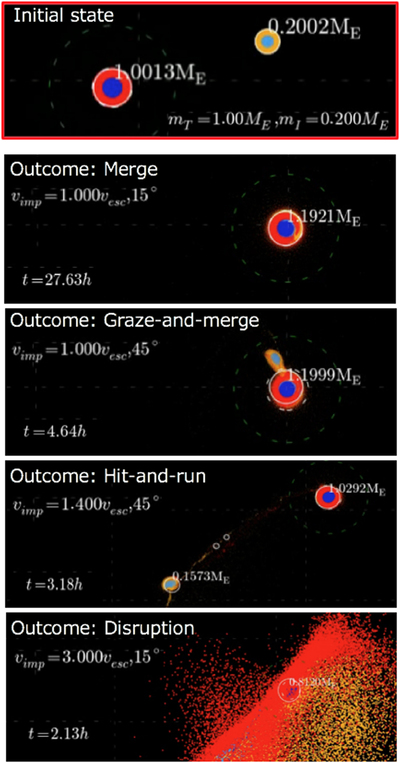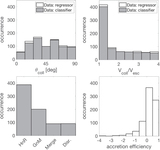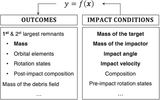Image Details

Caption: Figure 2.
Different combinations of the four impact properties (predictors: mass of the target, projectile-to-target mass ratio, impact angle, impact velocity), which lead to different collision outcomes (responses). The SPH code allows easy visualization of the results in the form of short clips. For example, the top panel of the figure shows the initial state of the simulation (target and impactor before the collision). The other panels show the collision type for various impact velocities and angles. From top to the bottom: a merging event, resulting from a head-on collision at low-impact velocity; a graze-and-merge event, resulting from a collision at the most probable impact angle (45°, Shoemaker 1962) and low-impact velocity; a hit-and-run event, resulting from a collision at an impact angle of 45° and moderate impact velocity; a disruptive event, resulting from a head-on collision at high impact velocity. The time after the collision (in hours) is reported at the bottom left of each frame. The simulations come from Reufer (2011). Further details of the simulation database and detailed physical analysis are provided in Gabriel et al. (2019).
Copyright and Terms & Conditions
© 2019. The American Astronomical Society. All rights reserved.









